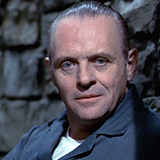16 personalities персонажи аниме
The 16 MBTI Types as Anime Characters
The MBTI is a model for describing personalities. It was put together by Jung, Myers, and Briggs, three psychologists. It’s not truly “scientific” but it’s a helpful tool for psychologists, and compared to the vast majority of personality tests, it’s the one most backed by research and statistics. There are 16 personality types, where each type is four letters and each letter reflects one of two preferences. I’ll tell you about those preferences in an over simplified way.
People who get their energy from being around others are extraverts (E), and people who get their energy from being alone are introverts (I). More practical and observant people are sensing types (S), while the theoretical and imaginative thinkers are intuitive types (N). Those who make most decisions based on a logical process are thinkers (T) and those who go with their gut or personal feelings are feelers (F). Finally, people who like to plan ahead are judging types (J) while more spontaneous people are Perceivers (P). Luffy from One Piece is an ESFP. He is energized by interactions with others, focuses on his senses more than imagination, decides things based on how he feels about the issue, and isn’t very organized or prepared.
Someone’s 4 letter type tells you more than just those preferences. The whole is greater than the sum of its parts. There are also tendencies, attitudes, and traits specific to each type. For example, ENFJs often become leaders or teachers, but are humble, and only want to serve the greater good. ISTP types are usually extremely in tune with the physical world and skilled with work or crafts that use their hands. It’s important to note that MBTI types do not reflect factors like grief, anger issues, mental illnesses, or mood disorders. Anyone from any type can have any kind of problem, and every type can have positive moods and traits unique to them, too. Now that you understand the basics, let me give you an example of each of the 16 types as anime characters.
—“Innovators”—
1) INTJ “The Scientist” or as I say “The Strategist”

INTJs like Satsuki are introverted, intuitive, thinking, and judging. They are cool-headed and always have a plan in mind. Like ENTJs, they can be bold and confident, but are less concerned with leading people, instead focused on carrying out their own goals. They are usually quieter and more polite in a social situation compared to ENTJs. Generally, INTJs are good at complex and strategic games. They have a reputation for being cold-hearted and calculated, and in stories, they are often the villains. However, any of the 16 types can be a good person, and INTJs are no exception. Their motivations and hearts are often morally pure, as in the case of Satsuki.
2) ENTJ “The Commander” or as I say “The Boss”
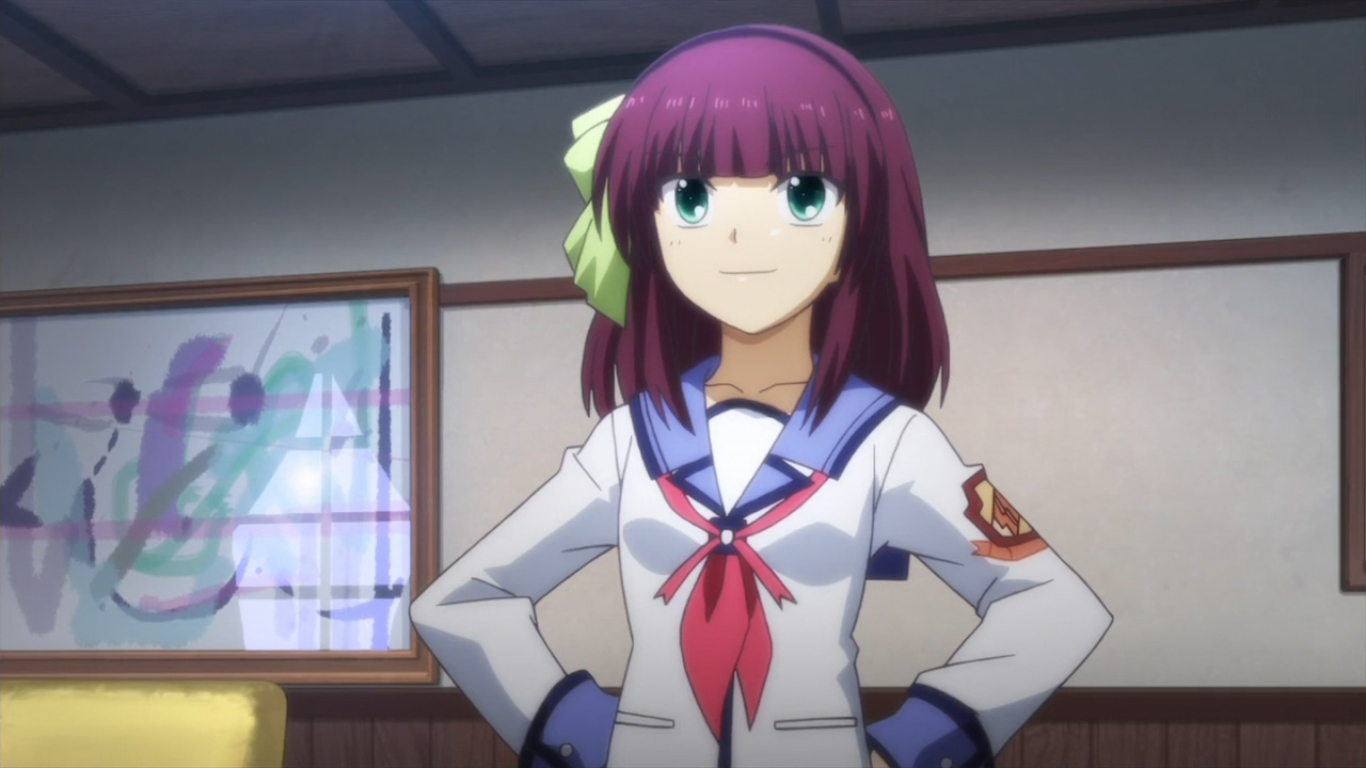
Yurippe, like most ENTJs, does best when she is in charge, and can be pretty damn scary. She and others of her type are confident, comfortable in their skin, charismatic, and knowledgeable. As leaders with the intuitive trait, they are amazing at comprehending and solving problems and obstacles. They are gifted with handling detailed organization and thorough planning. One of their weaknesses is being impatient with people who aren’t as capable, productive, or organized as they are. Another is being cold, or not considering personal feelings. Like INTJs, they have reputations for being “villainous.” Compared to an ESTJ, an ENTJ is more of an innovative thinker, relatively unconcerned with social standing or tradition.
4) ENTP “The Debater” or as I say “The Troll”
Zero Two is difficult to type because she has personal issues like anger and bitterness going on that confuse things a bit. Still, I believe I’m right to pick her as the ENTP. She is energized by others, a quick and innovative thinker, more logical in thought process than sentimental, and often spontaneous. ENTP types like to be the devil’s advocates, tearing the opinions of others to pieces mercilessly, because it’s fun. They have keen minds and are bored with practicality.
Thanks to her mental acuity and desire for thrills, Zero Two can fight and pilot Franxx very well, reacting quickly and appropriately to changing situations. She is charismatic and full of energy, with a quality that mesmerizes you… as long as she’s in a good mood and is convinced that you have a logical reason for whatever you’re saying or doing. This is typical ENTP behavior. Their weaknesses include being too argumentative and being intolerant of the needs of others.
3) INTP “The Thinker” or “F the World and Read some Books”
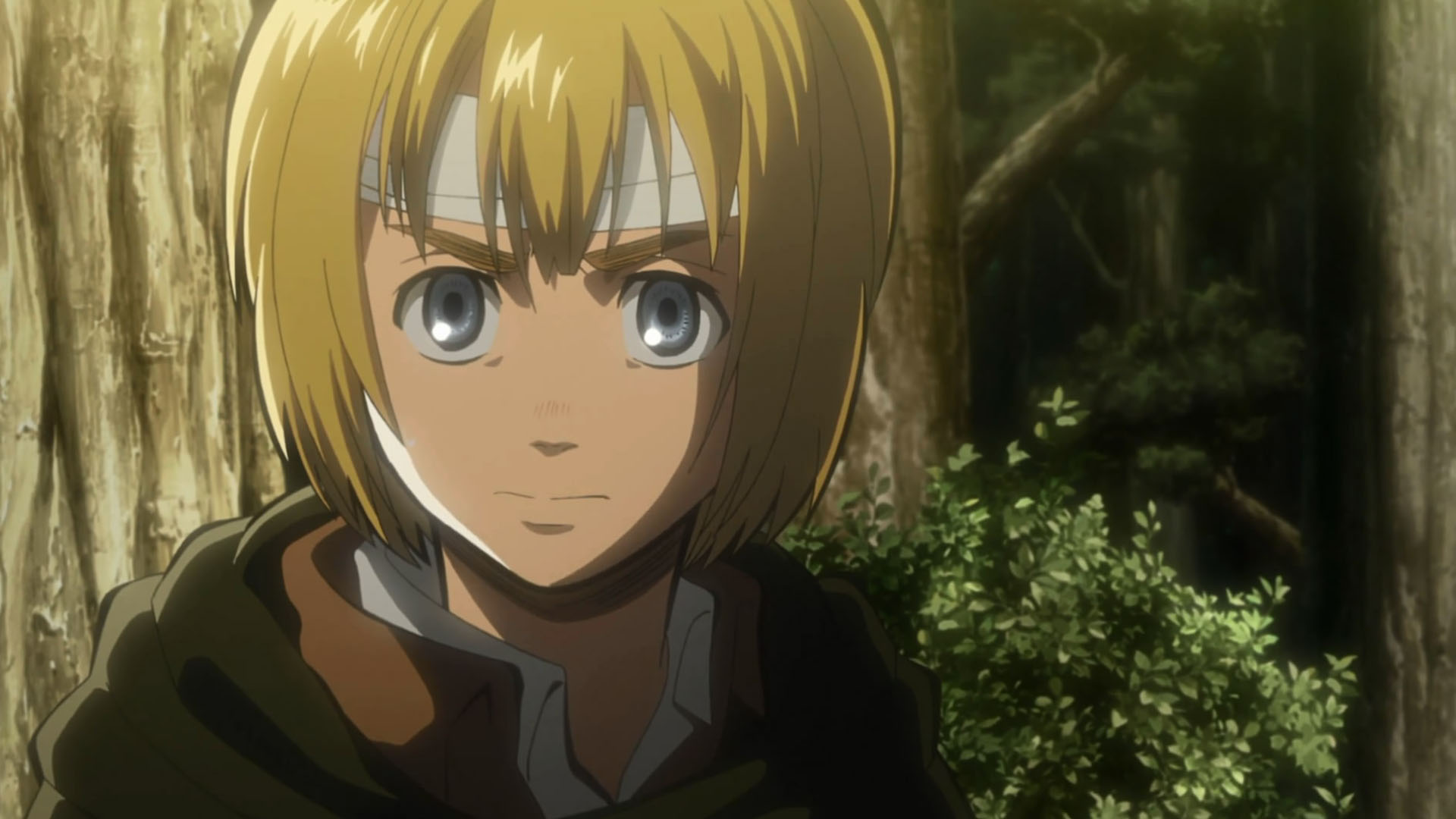
First let me note that giving MBTI types to anime characters is subjective, and not everyone will share the same opinion. There are many who argue that Armin is an INFJ. I believe that is absurd. Armin follows a logical thought process when making decisions (T), and excels at perceiving things as they unfold and “winging it” (P). He has anxiety and sometimes panics, but he’s still a Thinker, not a Feeler. Unlike INTJs, he doesn’t make complex plans, but comes up with amazing ideas on the fly. It’s up to others if they want to incorporate those ideas into strategies.
Usually, INTPs are not well in tune with their five senses, and they don’t always understand people’s feelings well, either. But they have amazing imaginations and the desire to always seek more knowledge. Nobody leaps between ideas as quickly as INTPs do– combining knowledge with imagination, they can see patterns and clues to the truth long before anyone else notices. INTPs might be the most mentally quick type, aside from the ENTPs, who are socially bold and better at broadcasting their brilliant thoughts. INTPs are more tolerant of different people and ideas compared to the ENTPs, who can’t stand loosely formed arguments.
Even though they don’t like dealing with intense emotions, curiosity makes INTPs want to understand people’s feelings. Since they are interested even when they don’t “get it,” they make good friends. They are usually quiet, but when a new idea hits them or they learn new facts, they get extremely excited and want to discuss it forever, regardless of whether you care.
—“Idealists”—
1) INFJ “The Advocate” or as I say “The Hero”

I don’t think I can quite hide my bias here, so I’ll just say it: INFJ is my favorite type due to my experience having them as loyal friends and the way they surprise me with their astonishingly noble intentions and creative thoughts. Akane Tsunemori is the textbook INFJ: a defender of those downtrodden by society, and a fighter for justice– and mercy– who wants to help as many people as she can. She’s guarded and quiet, but an imaginative thinker and a persuasive communicator when she speaks up. INFJs have few friends, but those few are the ones who earned her complete trust, and so, losing them is possibly the worst thing that can happen for an INFJ.
That’s not to say they’re weak-spirited, though. Akane and INFJs in general are tenacious, never giving up as long as they have a noble cause for which to fight. Akane can be assertive and stick up for herself, unlike the people-pleasing ENFJ. And, compared to an INFP, an INFJ handles new situations well and is better at getting the important and productive things done. INFJs can get lost in their cause and their deep well of quiet passion, becoming menacing and obsessive– Yuno Gasai and Akemi Homura are INFJs to which this happens. However, Akane is an extremely level-headed person, and manages to keep herself mentally healthy.
2) ENFJ “The Giver” or as I say “Stop Being So Nice!”

ENFJs are have such pure intentions and are so perpetually kind-hearted and driven to help all humankind that I quite honestly don’t understand them. I’ve encountered only one person in my life that took a test and told me he was ENFJ. My friendship with him fell apart because he was too, well, breakable. I was bound to shatter his gentle heart, even if I hadn’t had a mood disorder. ENFJs are very emotional when they are upset. However, when stable, ENFJs make great teachers, counselors, or leaders of small projects, since they have superb people skills, good insight, and the sensitivity to sympathize with anyone.
Unlike a selective and quiet INFJ, people like Maria get along well with everyone and are widely popular. This means they can end up friends with not-so-good people who will take advantage of their unending kindness. Conversely, the ENFJ is similar to an INFJ in her altruism, interest in serving others, and propensity for defending the downtrodden or the needy. Maria’s heart ached for Mamoru, who was weak and persecuted, without a partner. So she abandoned everything she knew to become his support. Yeah, I’m still salty about that.
3) INFP “The Dreamer” or as I say “Do You Even Reality?”

You should probably know this before we continue: I used to be an INFP. Every few months I take tests and review my typology books again, and I continue to move closer to INTP. This year, the test from 16personalities.com typed me as INTP. Having been one myself (and casually studying the MBTI for 10 years), I fully understand the INFP type. But I’m most familiar with how they work when they are “turbulent.” INFPs are the least practical and logical of all types, completely consumed by their creative pursuits and their rosy idealism. So when INFPs break, we break hard. It’s not pretty. Some recover from discovering the harshness of reality, but some can never heal, and end up changing personality types to better deal with this shitty world.
The INFP is idealistic and driven by ethics more than any other type. They are usually quiet, kind, sensitive, and warm-hearted. They aren’t very social, but when they befriend or love someone, they do so with all their hearts. The INFP is theoretical, getting lost in possibilities, mysticism, and imagination. They may come across as timid, but they will always stand up for their sense of ethics, even if it goes against logic. A happy INFP is an Anne Shirley, finding beauty and meaning in everything, endlessly optimistic. Even when distressed, they look for the bright side. People of Shinichi’s type make up just 3% of the population, so they are often misunderstood. Compared to an INFJ, Shinichi is less driven to actually accomplish things, and is more sensitive. Compared to an ENFP, Shinichi is much shyer and has poorer people skills.
4) ENFP “The Inspirer” or as I say “Popular and Deserves It”
ENFPs are gifted communicators, cheerful, popular, friendly, and very “chill” as long as their values aren’t challenged or they don’t overwhelm themselves. If any type deserves to have so many friends and admirers, it has to be this one, because they are so sweet, silly, and genuine. They usually have a lot of energy and natural curiosity. The combination of E and N encourages them to be observant of small changes in others or the “vibes” they give off. NF gives them an active imagination and E inspires them be social and express their unique thoughts. ENFPs are easier to get to know, and have a strong need to be liked, but otherwise they are very similar to INFP, focused on possibilites, positivity, ethics, and personal meaning.
As with the case of Armin the INTP, not everyone will agree on what type an anime character might be, and there’s no way to confirm it. A lot of people have pegged Sayaka as ESFP, but I disagree, after writing 4 blog posts analyzing her personality. She is more intuitive (N) than sensing (S). ENFPs are insightful about random things, more idealistic, imaginative, and well, airheaded, than the graceful, skilled, and asethetically keen ESFPs. The major weakness of ENFP is that they can rely on their intuition too much, forsaking practical observation, and coming to incorrect assumptions about people and situations. I love Sayaka to death, but she was wrong about everything, and just a little more focus on reality might have prevented her mistakes.
—“Sentinels”—
1) ISTJ “The Duty Fulfiller” or as I say “The Perfectionist”

I have a good deal of experience with ISTJ people in real life, and of course they are all different from each other, but they have some things in common, including the desire for perfection in their definition of proper and upright living. Some people peg Saber/ Arturia as an INFJ or an ISFJ, which makes sense, because Fate/Zero makes her seem idealistic. But if you look closely, she isn’t a theoretical, senstive idealist, but someone insistent on her correctness and determined to fix anything she might have done wrong in the past. Saber is more outpsoken, practical, and sensory in nature compared to INFJs. While ISFJs put helpfulness and care-giving first, Saber is concerned with honor, duty, and propriety. She is a sentinel of decency and respectability.
2) ESTJ “The Executive” or as I say “The King/ Queen”

Imagine if someone like Saber was less focused on completing their duties and more interested in being better than everyone else. Imagine if Saber were more socially confident and bolder, plus, even less patient and tolerant. Then you’d have an ESTJ. Asuka Langely from Evangelion is an ESTJ. So yes, they can be horrible people sometimes. But they aren’t all quite as egotystical and domineering as Asuka. For a more moderate example, King Bradley is also an ESTJ. He’s more poised. Even so, he has a harsher mind and more willfulfulness than all the other types.
An ESTJ like Bradley is concerned only with living in the concrete reality and dealing with its problems. He needs to lead others rather than follow or be an individualist. Because he can make logical but “cruel” decisions whenever needed, he is a strong and reliable leader. ESTJs have a set idea of how things should be, and will respect the systems and traditions in place. Of course, Bradley is a villain who wants to sacrifice human lives to make a new world, but ESTJs, like any other type, can be upright people. In fact, they are sometimes called the “good citizens” because they help society by leading others and doing the dirty work nobody wants to do.
3) ISFJ “The Defender” or as I say “The Dad”

They may not look it, but ISFJs like Ryuuji Takasu are actually big sweethearts. The primary desires of all ISFJs are to protect, serve, and love others well. To balance out their F side, most people of this type are analytical and practical. They also dislike changing their minds once they’ve been made, and they have firm beliefs in morals and traditions. ISFJs are still more open and accepting than ISTJs, though. Ryuuji and other ISFJs are very dedicated, reliable, and responsible. Never take their resolve lightly. They will work themselves to death if that’s what it takes to provide for, help, and protect people.
Some, like Ryuuji, are difficult to get a read on at first, because they may not talk much. Still, most have adequate people skills, and are happy to be social, especially if it involves being helpful. In order to please those around them or meet their own high expectations, ISTJs may bottle up their true feelings, only to explode with anger later, or have health breakdowns from over-work and stress. “Artistic” may not be the right word, but ISFJs are keenly aware of physical and sensory aesthetics, and usually have a hobby or outlet where they can be creative and/or organize things in the ways they like best. (In Ryuuji’s case, his hobby is cooking.)
4) ESFJ “The Caregiver” or as I say “The Mom”
I’m an INTP, so maybe it makes sense that my least favorite type to deal with on a regular basis is my opposite, the ESFJ. When they aren’t doing well, they’re terrible, being completely closed-minded to changes or new ideas, and yet emotionally needy; they can be manipulative of others, but hypersensitive to criticism. On the best of days, they still worry too much about being socially accepted. Now that the dark side of the ESFJ has been discussed, let’s talk about their positive traits. Yes, ESFJs stick to what’s conventional, and they want everybody to love them, but they also have a wealth of caring for others. They genuinely want to treat people well.
Everyone likes Tamaki, and in the same way, ESFJs are usually popular people. Tamaki is charming and warm, able to make a connection with whoever he’s talking to. It’s a toss-up between what Tamaki loves more: 1) being showered with adoration in the spotlight or 2) taking good care of other people with the power of love. He’s extremely loyal to his friends and loved ones, with a good sense of duty and honor. All this is typical of the ESFJ. They are also known for having good practical skills. It may seem at first like Tamaki has none, but think of how great he is at being a host, an entertainer, and sometimes an actor. Those count as skills.
—“Explorers”—
1) ISTP “The Mechanic” or as I say “The Badass”
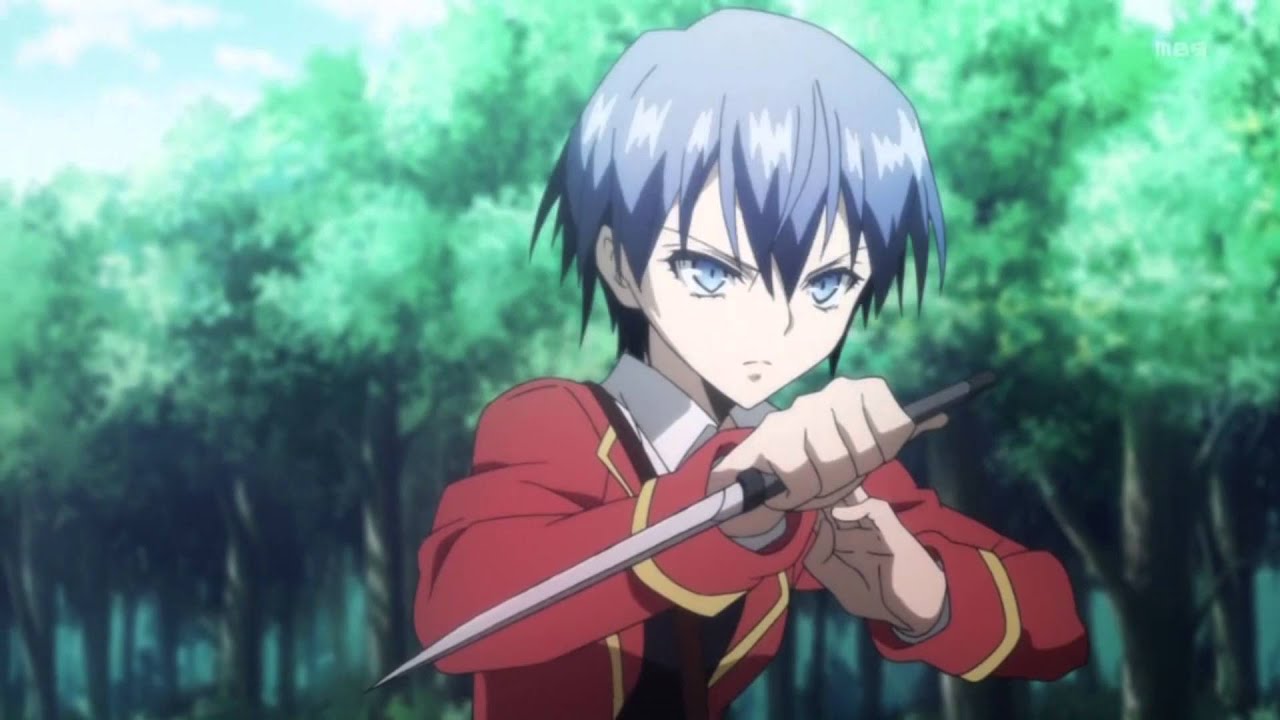
Tokaku is quiet, reserved, practical, spontaneous, and more logical than instinctual: an ISTP. This type has amazing practical or physical skills, especially with tools and things they can use with their own hands. Tokaku’s skill is wielding bladed weapons, from combat knives to aerodynamic throwing knives to light swords and probably more. She’s gifted in CQC in general.
ISTPs are curious and want to have exciting lives. They like being different and are difficult to predict, especially if they are high in introversion and don’t talk much. Sometimes they go through a complete and utter change of interests or life direction for the sake of trying all things and finding the most rational route. An ISTP like Tokaku is reasonable and plays fair, but can be too impulsive with actions or words, accidentally offending people. She’s very stubborn, and socially, she is lacking in self-expression. These are typical weaknesses of the ISTP.
2) ESTP “The Doer” or as I say “Be More Careful. ”
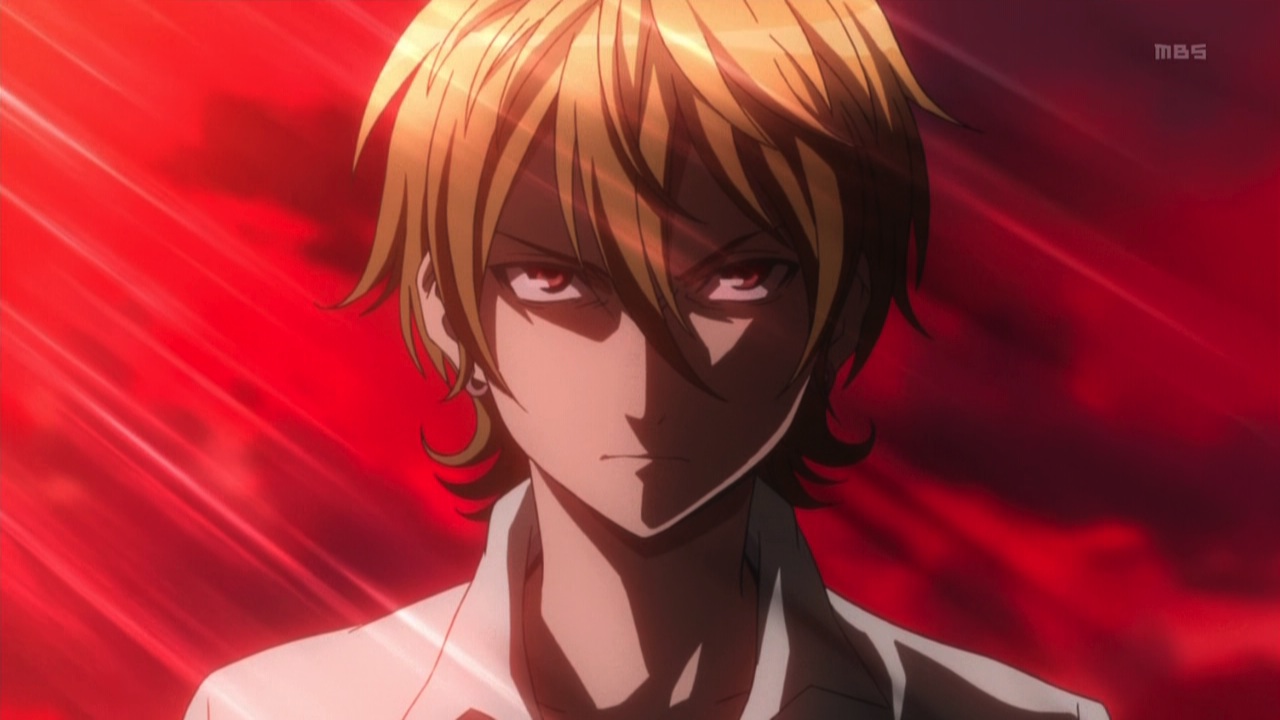
I have only interacted with two confirmed ESTPs in my life, so needless to say, I don’t know very much about this type besides the generalities I’ve read online. I do know two key things about those ESTPs friends of mine: 1) they like living on the edge and taking risks, and 2) though they were friendly, popular, and good-natured most of the time, they would often be accidentally insensitive, and/or brag about morally questionable pursuits. Those are both traits of the ESTP. Any type can have anger issues, but ESTPs are defiant by nature, and won’t be boxed in.
Despite being extremely rational thinkers focused on concrete reality, the ESTP is also an adventurer who craves challenges and risks. This type is smart and skilled, and that’s why it’s painful to see them risk their lives on a gamble for the sake of thrill. What makes Mahiro an ESTP? Mostly it’s his sharp mind with its practical logic, combined with hsi impatience, impulsivity, risk-taking, and carelessness about the entire rest of the world.
3) ESFP “The Performer” or as I say “Calm the F Down”

As an INTP, I have a hard time with ESFPs. They exhaust me with their endless, excited energy, and set off my startle reflexes with their need to talk loudly and emphatically. ESFPs have an amazing connection to their five senses and are the best with anything aesthetic out of all the types. (Gon uses this ability to conquer physical challenges with grace, and masters use of his keen eyesight and sense of smell.) He is cheerful, popular, and views the world as his spotlight in which to perform. ESFPs like Gon love attention, as long as it’s not critical attention. They don’t do well with conflict, and try to avoid it. Gon loves adventure, trying new things, and being with friends. He uplifts and encourages everyone around him. Those are classic ESFP traits.
Gon– and ESFPs in general– might be airheaded when it comes to academics, natural intuition, and having a wide knowledge base. However, they’re the smartest when it comes to anything involving the physical senses, and they know how to please people. Compared to lofty-minded ENFPs or INFPs, they are grounded in reality and practicality.
4) ISFP “The Adventurer” or as I say “The Independent”

Kallen and others of her type thirst for adventure, are in tune with and appreciative of physical aesthetics, and are independent to a fault. They are free spirits who don’t want to fit the mold, but to break it and throw it away. Much of this can be said about the other explorer types, too, so what makes the ISFP different? Kallen is calmer and quieter than performers like Gon, and much more sensitive and caring than the risk-takers like Mahiro. Compared to an ISTP like Tokaku, Kallen makes decisions based on her gut instincts and feelings rather than a detached, logical process. ISFPs are somewhat similar to the INFPs; both are creative, loving, and don’t do well with people getting in their way. However, the ISFP Kallen is more focused on reality and tangible goals than an idealistic, theoretical INFP like Shinichi.
Well, that about wraps it up for the sixteen Myers-Briggs types! Let me know if you agree with my choices! This has been Anime Rants. Ja, ne!!
If You Like What You Read, See…
16 personalities персонажи аниме
ISTJ
ISFJ
INFJ
INTJ
ISTP
ISFP
INFP
INTP
ESTP
ESFP
ENFP
ENTP
ESTJ
ESFJ
ENFJ
ENTJ
ISTJ имеют характерные черты. Это строгие, непоколебимые положительные герои, обеспечивающие порядок. Точны как часы. Практичность. Следование правилам. Создание и обеспечение порядка. Неустанное следование своему долгу. Честность и прямолинейность. Ответственность.
ISFJ имеют характерные черты и почти все являются положительными персонажами. Это серьезные и преданные помощники главного героя, всегда готовые защищать своих близких. Истинный альтруизм. Сочувствие другим людям. Преданность и обходительность. Стремление к стабильности и безопасности. Практичность. Ответственность. Надежность.
INFJ имеют характерные черты и почти все являются положительными персонажами. В большинстве своем, это мудрые, сильные, но загадочные наставники главных героев. Богатое воображение. Проницательность. Способность разглядеть возможности, заложенные в окружающих. Способность вдохновлять.
ISTP имеют характерные черты. Это сильные, во всех смыслах, персонажи, уверенно идущие к своей цели. Как правило, это положительные главные герои. Зрителю всегда нравились сильные, смелые и решительные персонажи. ISTP не тратят время попусту, они быстро оценивают проблему и незамедлительно решают ее. Рационализм. Честность и прямолинейность. Спокойствие, сдержанность.
Не сразу можно выявить характерные черты ISFP персонажей. Обычно это обаятельные, чувственные и нежные положительные герои. Идеалистичность и преданность. Внимание к другим людям. Чувство гармонии. Иногда неуверенность.
Не сразу можно выявить характерные черты INFP персонажей. Это добрые и наивные мечтатели, увлеченные люди, часто играющие ключевые роли. Истинные идеалисты. Поэтическая натура. Воображение и проницательность. Моральность и добродетель.
INTP в кинематографе представлен неоднозначно. Очень мало героев и тем более главных героев с таким типом личности. Наверно, образ INTP можно было бы охарактеризовать как скучного математика. Логика. Аналитика. Склонность к систематизации концепций и идей. Воображение. Абстрактное мышление.




